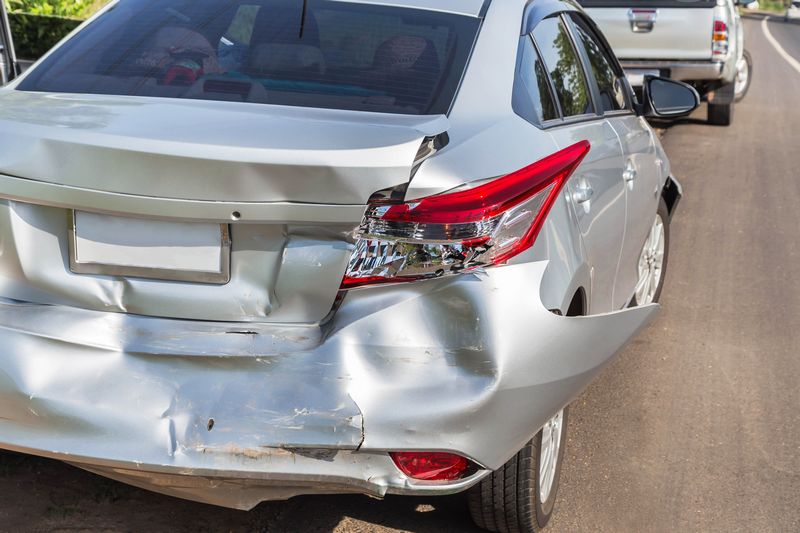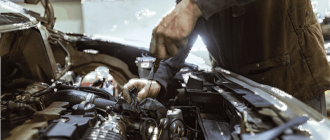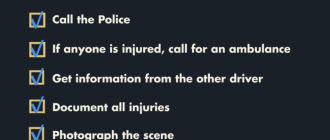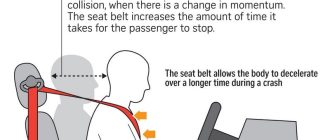
What to Do After You’ve Been Rear-Ended
Being rear-ended in a car accident can be a stressful and overwhelming experience. In the heat of the moment, it’s important to stay calm and focused. Here is a comprehensive guide on what steps to take after you’ve been rear-ended, including how to file a claim, involve the police, report the accident to your insurance company, and assess the damages.
The first step after being rear-ended is to make sure everyone involved is safe. Check yourself and your passengers for any injuries, and if necessary, call an ambulance. Then, it’s important to move your vehicle to a safe spot if it’s still operational. If your car is immobile, turn on the hazard lights and set up warning triangles or flares to alert other drivers.
Once everyone is safe, it’s crucial to exchange information with the other driver. Obtain their name, contact information, driver’s license number, insurance details, and license plate number. If there are any witnesses present, try to get their contact information as well. Additionally, take photos of the accident scene, including the damage to both vehicles. These details will be important when filing a claim or reporting the accident to your insurance company.
After exchanging information, it’s recommended to involve the police. Call the non-emergency number and report the accident. The police will arrive at the scene and create an accident report, which can be useful when filing an insurance claim. Ensure you provide accurate and detailed information about the incident to the police officer.
Next, it’s time to contact your insurance company and report the accident. Provide them with all the necessary details, including the information obtained from the other driver, the accident report number, and any photos you took. They will guide you through the claims process and may require you to get an evaluation of the damages from a trusted auto repair shop.
Assess the Situation
Being rear-ended can be a stressful and unexpected event. After a rear-end accident, it’s crucial to assess the situation carefully to ensure the well-being of all parties involved and to gather necessary information for insurance and legal purposes.
- Check for injuries: The first step is to check yourself and others involved in the accident for any injuries. If anyone is injured, it’s important to seek medical attention immediately.
- Call the police: Contact the local police to report the accident. The police will arrive at the scene, assess the situation, and create an accident report. This report will be valuable when filing an insurance claim.
- Gather information: Exchange contact and insurance information with the other driver(s) involved in the accident. This includes their name, phone number, address, driver’s license number, license plate number, and insurance policy details. Additionally, gather contact information for any witnesses present.
- Take photos: Use your phone or a camera to document the damage to all vehicles involved in the accident. This evidence can be important when filing an insurance claim.
- File an insurance claim: Contact your insurance company as soon as possible to report the accident. Provide them with all the necessary information, including the accident report and photos. Follow their instructions on how to proceed with filing a claim.
- Obtain a professional evaluation: After the accident, it’s essential to take your vehicle to a trusted mechanic for a thorough evaluation. Even if there are no visible damages, there may be underlying issues that need to be addressed. The evaluation will provide you with an estimate of the repair costs.
By following these steps and assessing the situation carefully, you can ensure that you have all the necessary information and documentation to proceed with insurance claims or legal action if necessary. Remember to stay calm and cooperate with the involved parties throughout the process.
Check for Injuries
If you have been rear-ended in a car accident, the first thing you need to do is check yourself and others for injuries. Your health and safety should always be your top priority.
1. Assess Yourself: Take a moment to evaluate your own physical condition. Check for any visible injuries such as cuts, bruises, or swelling. Pay attention to any pain or discomfort you may be experiencing. Even if you feel fine, it’s still a good idea to get a thorough examination from a medical professional. Some injuries may not show immediate symptoms but can develop over time.
2. Check Others: If there are other people involved in the accident, check to see if they are injured. Look for any obvious signs of injury and ask if they are experiencing any pain or discomfort. If someone is seriously injured, immediately call for emergency medical assistance.
3. Call the Police: Regardless of the severity of the accident, it’s important to contact the police and report the rear-end accident. The police report will document the details of the incident and provide important information for insurance purposes.
4. Document Damages: Take photos of the damages to your vehicle as well as any other vehicles involved in the accident. This documentation will be useful when filing an insurance claim or seeking compensation for the damages.
5. Exchange Information: Exchange contact and insurance information with the other driver(s) involved in the accident. This information will be necessary when filing an insurance claim and seeking compensation for any damages or injuries.
6. Seek Legal Advice: If you’ve been rear-ended and are unsure of your rights or how to proceed, it may be wise to consult with a personal injury attorney. They can provide guidance on your best options for seeking compensation and navigating the insurance claim process.
Move to a Safe Location
If you have been rear-ended in a car accident, it is important to move your vehicle to a safe location if possible. This is crucial for your own safety and to prevent further accidents or damages.
Here are some steps to follow when moving to a safe location:
- Assess the situation: Determine if your vehicle is in a drivable condition and if it is safe to move. If your car is heavily damaged or if there is a risk of fuel leakage, it might be safer to leave it where it is and wait for the authorities to arrive.
- Activate hazard lights: Turn on your hazard lights to alert other drivers that your vehicle is not in normal operation.
- Signal and observe: Use your signals to indicate your intention to change lanes or pull over. Check your mirrors and blind spots for any approaching vehicles before making any movements.
- Find a safe spot: Look for a safe area to move your vehicle, such as the shoulder of the road, a parking lot, or a nearby side street. If it is not safe to exit the vehicle, you can stay inside with your seatbelt on until help arrives.
- Contact the police: After moving to a safe location, contact the police to report the accident. They will document the incident and provide you with an accident report, which will be useful for insurance purposes.
- Document damages: Take photos or videos of any damages to your vehicle, as well as the surrounding area. This evidence will be helpful when filing an insurance claim or evaluating the extent of damages.
- Seek medical attention if necessary: If you or any passengers in your vehicle have sustained injuries, it is important to seek medical attention as soon as possible. Even if you do not notice any immediate injuries, it is recommended to get a medical evaluation to rule out any underlying conditions.
- Notify your insurance company: Contact your insurance company to report the accident and initiate the claims process. Provide them with all the necessary information, including the police report, photographs of damages, and any medical documentation if applicable.
Remember, your safety should be your top priority after being rear-ended in a car accident. Moving to a safe location and following the proper steps will help ensure your well-being and protect your rights in the situation.
Exchange Information
After evaluating the accident and assessing any damages caused by being rear-ended, it is crucial to exchange information with the other party involved. This step is essential for filing an insurance claim and receiving compensation for any expenses incurred.
Here is a list of information that should be exchanged:
- Contact details: Exchange names, phone numbers, and email addresses with the other driver.
- License plate number: Note down the license plate number of the other vehicle.
- Insurance information: Exchange insurance company names and policy numbers.
- Driver’s license: Share driver’s license numbers and state of issuance.
- Vehicle description: Take note of the make, model, year, and color of the other vehicle.
- Photos: Document the accident scene and any damages using your phone or camera. This can serve as evidence for your insurance claim.
It’s important to remain calm and cooperative during this process. If there are any witnesses present, try to collect their contact information as well.
Remember, even if the accident seems minor, it’s still crucial to contact the police and file a report. This can help establish liability and support your insurance claim, especially if the other party is uncooperative.
Once you have collected all the necessary information, contact your insurance company as soon as possible to initiate the claims process. Provide them with all the details, including the other party’s information and the police report, if available.
By promptly exchanging information and filing an insurance claim, you can ensure that you receive the proper compensation for any damages or injuries caused by being rear-ended.
Document the Accident
After being rear-ended, it is crucial to document the accident thoroughly. This step is essential to ensure a smooth insurance claim process and to protect your rights. Here are the key steps to take:
- Report the accident: Notify the police about the incident, regardless of how minor it may seem. Their report will serve as an official record of the accident.
- Seek medical attention: Even if you feel fine, it is essential to get a medical evaluation. Some injuries may not be immediately apparent, and having medical documentation is essential.
- Document damages: Take photos and videos of the accident scene, making sure to capture any visible damages to your vehicle. This evidence will support your insurance claim.
- Exchange information: Exchange contact and insurance information with the other driver involved in the accident. Include their name, phone number, address, license plate number, and insurance details.
- Identify witnesses: If there were any witnesses to the accident, obtain their contact information. Their statements may be crucial in supporting your case.
- Notify your insurance company: Report the accident to your insurance company as soon as possible. Provide them with all the necessary information and documents.
- Keep all records: Maintain a file with all the documentation related to the accident, including police reports, medical records, repair invoices, and correspondence with insurance companies.
By documenting the accident thoroughly, you will have proper evidence to support your claim and protect your rights in case of any disputes that arise.

Notify Your Insurance Company
After being involved in a rear-end accident, it is important to notify your insurance company as soon as possible. Regardless of the severity of the accident, informing your insurance company allows them to start the necessary processes to handle the situation.
When contacting your insurance company, be prepared to provide them with the following information:
- Police Report: If a police report was filed at the scene of the accident, make sure to have this report available when speaking with your insurance company. The police report will contain important details about the accident, including any citations issued.
- Medical Information: If you or anyone in your vehicle sustained any injuries in the accident, make sure to let your insurance company know. They may need this information for processing any medical claims.
- Insurance Information: Provide your insurance company with the details of the other driver involved in the accident, including their insurance information. This will help your insurance company when pursuing a claim for damages.
- Evaluation of Damages: If your vehicle was damaged in the accident, make sure to have it evaluated by a professional mechanic. This evaluation will help determine the extent of the damages and the cost of repairs.
Once your insurance company has been notified, they will guide you through the process of filing a claim. Keep in mind that it is important to report the accident promptly, as some insurance policies have time limits for reporting accidents.
By promptly notifying your insurance company, you can ensure that the necessary steps are taken to handle your claim efficiently and effectively.
Seek Medical Attention
If you have been involved in an accident where you have been rear-ended, it is important to seek medical attention as soon as possible. Even if you do not feel any immediate pain or injuries, it is still important to get a medical evaluation to ensure that no hidden damages have occurred.
Here is a step-by-step guide on what to do after being rear-ended in terms of seeking medical attention:
- Assess your condition: After the accident, take a moment to assess your physical condition. Check for any visible injuries or pain. If you experience difficulty breathing, severe pain, or any other serious symptoms, call emergency services immediately.
- Exchange information: Exchange contact and insurance information with the other party involved in the accident. This information will be important for filing an insurance claim later.
- Document the accident: Take pictures of the accident scene, including any damage to your vehicle and the surrounding area. This evidence can be useful when filing an insurance claim.
- Visit a healthcare professional: Make an appointment with your doctor or visit an urgent care center to get a comprehensive evaluation. Even if you do not have any visible injuries or immediate pain, it is still important to get checked out. Some injuries, such as whiplash, may not manifest symptoms until hours or even days after the accident.
- Follow through with recommended treatments: If your healthcare professional recommends any further treatments, such as physical therapy or chiropractic care, make sure to follow through with them. This will not only help with your recovery but also provide documentation of your injuries and medical expenses, which will be important when filing an insurance claim.
- Keep records: Keep a record of all your medical appointments, treatments, and expenses related to the accident. This documentation will be important when filing an insurance claim to prove the extent of your injuries and the resulting costs.
- Notify your insurance company: Contact your insurance company as soon as possible to report the accident and provide them with all the necessary information, including any medical documentation. They will guide you through the process of filing a claim.
Seeking medical attention after being rear-ended is crucial not only for your health but also for the legal and insurance-related aspects of the accident. By following the steps above, you can ensure that any injuries you may have sustained are properly evaluated and treated, and that you receive the compensation you deserve for any damages caused by the accident.
Consider Legal Options
If you’ve been rear-ended in an accident, it’s important to consider your legal options. Even if the accident seemed minor and there were no immediate injuries, it’s still a good idea to protect yourself and your rights. Here are some steps to consider:
- Document the accident: Take pictures of the damages to your vehicle and the other vehicle involved. Also, gather any relevant information such as the other driver’s contact information and insurance details.
- Contact the police: If you haven’t already done so, report the accident to the police. Having an official police report can help with your insurance claim and any potential legal action.
- Seek medical evaluation: Even if you don’t feel any immediate pain or injuries, it’s still recommended to seek a medical evaluation. Some injuries may not be immediately apparent and can develop over time.
- Notify your insurance company: Contact your insurance company to report the accident and initiate the claims process. Be sure to provide them with all the necessary details and documentation.
- Consider consulting an attorney: Depending on the circumstances of your accident and the extent of the damages, it may be beneficial to consult with a personal injury attorney. They can help protect your rights, navigate the legal process, and advocate for maximum compensation.
Remember, every accident is unique, and the legal options available to you may vary. It’s important to consult with a legal professional who can provide guidance based on your specific situation.
Repair Your Vehicle
If you’ve been involved in an accident where your vehicle was rear-ended, it is important to take the necessary steps to repair your vehicle. Here are some steps you can follow:
- Report the accident: Contact the police and report the incident. They will document the details of the accident and provide you with a police report.
- Assess the damages: After ensuring your safety, inspect your vehicle for damages. Take note of any visible damages such as dented bodywork, broken lights, or loose parts.
- Get a professional evaluation: Take your vehicle to a trusted mechanic or an auto body shop for a thorough evaluation of the damages. They will assess both the visible and underlying damages to determine the extent of repairs needed.
- Consider your medical needs: If you or any passengers in your vehicle were injured, seek medical attention as soon as possible. It’s important to prioritize your health and well-being.
- Contact your insurance company: Notify your insurance company about the accident and provide them with the necessary information, such as the police report and evaluation of damages. They will guide you through the process of making a claim.
- Follow your insurance company’s instructions: Your insurance company may recommend specific repair shops or require additional documentation. Follow their instructions and provide them with the requested information to move forward with the repairs.
- Get your vehicle repaired: Once you have obtained the necessary approvals from your insurance company, take your vehicle to the recommended repair shop or a trusted mechanic. Ensure that they have the expertise and experience to handle the specific repairs required.
Repairing your vehicle after being rear-ended is crucial to ensure its safe operation and maintain its resale value. Follow these steps to address the damages and get your vehicle back on the road as soon as possible.
Follow Up on Your Claim
After being involved in a rear-end accident, it is important to follow up on your insurance claim to ensure that you receive proper compensation for your damages and injuries. Here are the steps you should take:
- 1. Evaluation of damages: First, you should evaluate the damages to your vehicle. Take pictures of both your vehicle and the other vehicle involved in the accident to document the extent of the damage.
- 2. Medical report: If you sustained any injuries during the accident, it is crucial to seek medical attention and obtain a medical report. This report will serve as evidence of your injuries and any treatment you may require.
- 3. Contact your insurance company: As soon as possible, contact your insurance company to report the accident and initiate the claims process. Provide them with all the details of the accident, including the police report if one was filed.
- 4. Police report: If the police were called to the scene of the accident, obtain a copy of the police report. This report will contain important information about the accident, such as the date, time, location, and the parties involved.
- 5. Documentation: Keep track of all documents related to the accident, such as medical bills, repair receipts, and any other relevant expenses. These documents will be essential for supporting your claim.
- 6. Follow up: Stay in regular contact with your insurance company to follow up on the progress of your claim. Be proactive and provide any additional information or documentation they may request.
- 7. Resolution: Once your insurance claim has been processed, you will receive a resolution. This could be in the form of a settlement offer or a denial. Review the resolution carefully and seek legal advice if necessary.
By following these steps and staying actively involved in your insurance claim, you can maximize your chances of receiving fair compensation for the damages and injuries you suffered in the rear-end accident.
Q&A:
I’ve just been involved in a rear-end collision. What should I do first?
The first thing you should do after a rear-end collision is to ensure your safety and the safety of others involved. Move your vehicle to a safe location and turn on your hazard lights.
What information should I collect from the other driver?
You should obtain the other driver’s name, contact information, driver’s license number, and insurance information. It’s also helpful to document the make, model, and license plate number of their vehicle.
Should I file a police report for a rear-end collision?
It is recommended to file a police report for any car accident, including rear-end collisions. This report can serve as important documentation for insurance claims and legal purposes.
How can I assess the damage to my vehicle?
You can visually inspect your vehicle for any visible damage. It’s also advisable to take pictures of the damage and contact your insurance company to schedule a professional assessment.
What if I experience pain or injuries after being rear-ended?
If you experience pain or injuries after a rear-end collision, it’s important to seek medical attention immediately. Even if you don’t feel pain right away, some injuries may become apparent later on. Document your injuries and keep track of any medical expenses for insurance claims.





